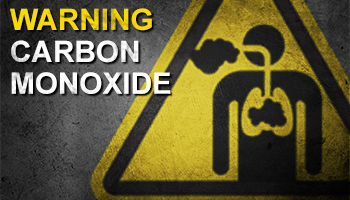
During heating season, the threat of carbon monoxide (CO) poisoning is at its peak—for homeowners and the HVACR pros making service calls. Because CO is an odorless, colorless and tasteless gas, it’s critical to practice CO safety and be armed with a reliable carbon monoxide detector, proactive in its use, aware of the steps to take if CO levels are detected and able to recognize the symptoms of CO poisoning.
Sources of CO
Fuel-fired appliances, like furnaces, use combustion to create heat. Since combustion is never perfect, dangerous byproducts like CO are produced along with heat. Performing combustion analysis helps HVAC techs precisely regulate the fuel and airflow, optimizing system efficiency and safety by delivering the most heat while minimizing harmful emissions.
CO Symptoms and Effects
Common symptoms of CO exposure include headaches, dizziness, and nausea. Exposure might also lead to weakness, confusion, and shortness of breath. Anyone having these symptoms on the job site should immediately notify occupants, leave the area, and begin proper ventilation procedures. If the symptoms do not stop, seek medical attention immediately. Higher levels of exposure lead to chest pain, blurred vision and loss of consciousness. In severe cases, CO poisoning is fatal.
Check for CO
It’s impossible to know if CO is present without a proper CO detector. Use a “walk-around” carbon monoxide detector like the SCM4 Carbon Monoxide Detector, which features a fast, electro-chemical sensor to measure CO levels from zero to 1000 parts-per-million (ppm) in real time. For reference, 9 ppm is considered the maximum safe level of exposure over 8 hours for indoor environments and 200 ppm or greater will cause physical symptoms and can be fatal.
Keep a CO detector and other combustion analysis tools in your HVACR toolkit for every job, regardless of the equipment being serviced, as other fuel-fired appliances may be present. Wearable CO detectors provide continuous monitoring for added safety. Home-installed CO detectors are also crucial for early warnings of elevated CO levels.
Get Certified
Any tech working around furnaces should obtain certification in combustion performance and carbon monoxide safety. Many organizations offer certification for HVAC techs to learn about CO hazards, testing procedures using a carbon monoxide detector and an overview of the combustion process. For example, learn more about the courses offered by the Carbon Monoxide Safety Association.
CO is a serious and frequent danger to both techs and occupants. Always practice CO safety, ensuring that fuel-fired appliances meet safety standards, keeping you and your clients safe.